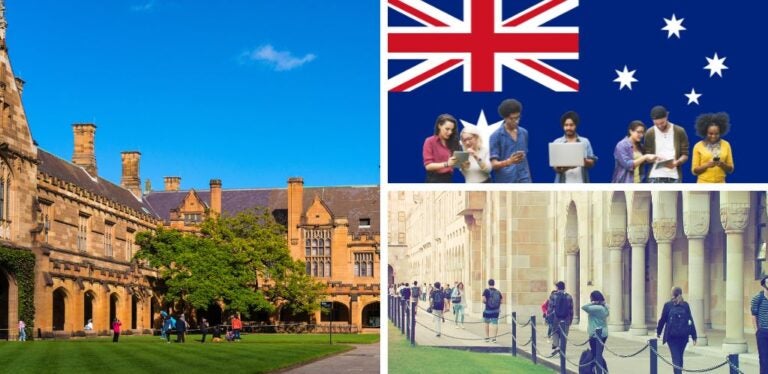How to study in Australia as an international student?
Learn how to study in Australia as a foreigner. What requirements will you need to meet? How much does it cost? Find the answers here.
If you’ve ever dreamed of studying at an Australian university or institution, you’re not alone. It is considered one of the best countries to study abroad and in the 23/24 school year, about 800,000 international students enrolled in its classes. This popularity is due to the quality of its education, its prestigious institutions, and the opportunity to live a unique multicultural experience. But, how can you study in Australia being a foreigner? Is it easy to get a spot? What requirements do they ask for?
To help you make your dream a reality, we’ve put together a complete guide with everything you need to know — the requirements, a step-by-step breakdown of the process, and how much it all costs. We’ll also cover how the education system works and share some practical tips that’ll come in handy before you move, so your arrival and adjustment go as smoothly as possible. Join us and start getting ready for your journey today.
How does the education system work in Australia?
Before deciding if Australia is the right place for your studies, it’s important to take a moment to understand how its education system is structured. What sets it apart from other countries is its practical approach, high quality, and strong connection to the job market. The system is divided into several levels: primary, secondary, and vocational or university education.
For international students, one of the main advantages is that all programs are taught in English. Plus, there are English Language Intensive Courses for Overseas Students (ELICOS) available for those who need to improve their language skills before starting a university program.
When it comes to higher education, Australian institutions fall into two main categories. On one hand, there are traditional universities, which focus on academic and research-based education. On the other, there’s TAFE (Technical and Further Education), which offers technical and vocational training with a more hands-on approach. Let’s take a look at the key differences between the two in the table below:
| Level of education | Duration | Description | Languages of study |
| Primary and secondary education | 12 years | Compulsory education until the age of 16, with the possibility of continuing until the age of 18 to access higher education. | English |
| Technical and vocational education (TAFE and VET) | 6 months – 2 years | Education focused on labor market insertion with courses in areas such as business, health, technology, tourism, among others. | English |
| University degree (Undergraduate) | 3-4 years | Academic programs in various disciplines, with the option of specialization and internships in companies. | English |
| Master’s Degree (Postgraduate) | 1-2 years | It can be professional or research, with a focus on advanced specialization. | English |
| Doctorate (PhD) | 3-4 years | Advanced research programs with the possibility of funding for students. | English |
As you can see, the education system in Australia is flexible and offers students the possibility to customize their path according to their interests.
Requirements to study in Australia for international students
Just like studying in any other country, there are certain requirements you’ll need to meet before heading to Australia. It’s important to understand them clearly from the start — it’ll help you avoid visa issues or delays in the process. While each institution may have its own specific criteria, these are the general requirements every international student must meet:
- Letter of acceptance: The first step, of course, is getting accepted into an accredited university or educational institution. Make sure to submit your application within the deadline and meet the specific requirements set by each school to secure your spot.
- Student visa (subclass 500): Unless your program lasts less than three months, you’ll need to apply for a student visa. The process can take anywhere from four to eight weeks, so don’t leave it to the last minute — get started early.
- Valid passport: Must be valid for the duration of your stay in Australia.
- Proof of language proficiency: Depending on the course, you may need to prove your English level with tests like IELTS, TOEFL, or Cambridge. Each institution sets its own minimum score requirements.
- International Student Health Insurance (OSHC): All international students are required to have health insurance approved by the Australian government. It’s called Overseas Student Health Cover (OSHC), and you can find plenty of details about it in our post on the best health insurance options for international students in Australia.
- Justification of funds: If you’re applying for a student visa, you’ll need to show that you have enough funds to support yourself during your stay. Currently, the requirement is a minimum of AUD $24,505 (around USD $16,000) per year for living expenses — not including tuition fees. You’ll be asked to provide bank statements, scholarship details, or sponsorship letters as proof.
- Payment of tuition fees: Some universities require an advance payment of part of the tuition to confirm a spot. It depends on the institution and the program, but estimate between AUD $1,000-5,000 (USD $650-3,250).
- Medical and criminal record examination: This requirement is less common — it depends on your visa type and country of origin — but in some cases, you may be asked to undergo a medical exam with a doctor approved by the Australian government, as well as provide a police clearance certificate.
The exact requirements vary by institution, so it’s best to check the website of the one you’re interested in. It’s also important to plan ahead and start the process early — especially when it comes to your visa, health insurance, and language proficiency test.

Steps to study in Australia as a foreigner
Now that you understand how the Australian education system works and what requirements you’ll need to meet, it’s time to dive deeper into the process. Knowing what to expect at each stage will make everything feel more manageable and less overwhelming. It’ll also help you create a solid plan and avoid missing important deadlines. Let’s take a look at the steps you’ll need to follow before you find yourself sitting in an Australian classroom.
1. Evaluate universities and courses in Australia
Let’s start with the basics: What kind of institution are you aiming for? And what do you want to study? As we mentioned earlier, Australia is home to some prestigious universities like the University of Melbourne, the Australian National University, and the University of Sydney. These institutions offer everything from specialized short courses to full undergraduate degrees. Here’s a table to help you understand the differences between the two options:
| University studies | Short courses | |
| Duration | Long programs: 3-4 years for bachelor’s degrees, 1-2 years for master’s degrees. | Intensive training from weeks to months, focused on specific skills. |
| Cost | High annual tuition for international students, with scholarship and financing options. | Generally more affordable, though fewer scholarship options. |
| Languages available | Mostly in English, with some programs in other languages in collaboration with international universities. | High availability in English, with specific courses in other languages depending on demand. |
| Main objective | In-depth academic training, with the possibility of specialization and access to research. | Development of practical skills to improve the professional profile without the need for a full university degree. |
| Entry requirements | More demanding: Previous degrees, English tests (IELTS, TOEFL), homologations and extensive documentation. | More accessible: In many cases, they only require previous experience or intermediate English certification. |
| Flexibility | Rigid structure with fixed schedules, face-to-face or hybrid modality. | Greater flexibility: On-site, online and intensive options to combine with work or other studies. |
| Professional opportunities | Access to jobs in international companies, research and highly specialized sectors. | Quick option to improve skills, change sectors or increase employability. |
The right choice for you will depend on what you’re looking for. Check each university or institution’s website for their specific requirements, look at international rankings, and if possible, attend education fairs to gather more information.
2. Review funding options for study in Australia
Already know what you want to study and where? Great — now it’s time to think about how you’re going to pay for it. While costs vary depending on the program and university, studying in Australia isn’t exactly cheap. Tuition fees for undergraduate degrees typically range from AUD $20,000 to $45,000 (USD $13,000 to $30,000) per year. For postgraduate programs or specialized courses, costs can climb as high as AUD $50,000 (USD $32,000). If you need financial support, there are several options available:
- Scholarships for foreigners: The Australian government and many universities offer scholarships for international students. One of the most well-known is the Australia Awards Scholarship, aimed at students from developing countries. Many universities also have their own scholarship programs.
- Student loans: Unlike Australian students, international students aren’t eligible for the government’s HECS-HELP loan program. However, some financial institutions do offer student loans to help cover tuition fees or living expenses.
- Private funds and sponsorships: There are also international organizations and companies that offer partial funding for studies in specific fields like technology, healthcare, or scientific research.
The best way to find funding for your studies is to check scholarship and grant opportunities directly on the Australian government’s website or on the websites of the universities you’re interested in.
3. Apply to a study program in Australia
Once you’ve decided on the program you want to study, it’s time to start the admissions process. In Australia, applications are submitted either directly through the universities or via authorized education agents. Each institution has its own specific requirements, but in addition to the general ones we mentioned earlier, you’ll likely need to provide:
- Cover letter: A document in which you explain why you want to study in that program and what you can bring to the institution.
- Certificates of previous studies: They must be translated into English and, in some cases, approved according to Australian regulations.
- Letters of recommendation: Required for some graduate programs or specializations.
- Application fees: Some universities charge between AUD $100-150 (USD $65-100) for processing the application.
Important! Keep an eye on application deadlines. For programs starting in the first semester of the following year, applications usually close between October and December. For those beginning in the second semester, deadlines typically fall between April and June.
4. Apply for a visa to study in Australia
You’ll also need a visa. We cover it in detail in our post about the Australian student visa, but here’s a quick overview:
- Student visa (subclass 500): For international students who will be studying a full-time program at an Australian registered institution.
- Visitor visa (subclass 600): Valid option for courses of up to 3 months, ideal for short programs or language courses.
- Training visa (subclass 407): Aimed at those participating in professional training programs or supervised internships in Australia.
The good thing is that many Australian universities have teams that can guide you and ease the process.

5. Moving to Australia
And we’ve reached the most exciting moment – you’re moving to Australia! Several practical details to keep in mind:
- Accommodation: In cities like Sydney and Melbourne, rent can be pretty expensive. A one-bedroom apartment in the city center can cost anywhere from AUD $2,000 to $3,500 (USD $1,300 to $2,300) per month. In the suburbs or outer areas, prices are a bit lower — around AUD $1,500 (USD $980). Websites like Flatmates, Domain, or rent.com.au are great places to start your search for a place to live in Australia.
- Transportation: Australia’s public transportation system is generally reliable, though it varies from city to city. In Sydney and Melbourne, trains and trams are popular ways to get around, while in Brisbane and Perth, buses are more common. As a student, you can take advantage of discounted fares using cards like Opal (Sydney), Myki (Melbourne), and Go Card (Brisbane).
- Local customs: Heads up — depending on where you’re from, some things might catch you off guard. One example is meal times: lunch is usually light and eaten between 12:00 and 1:00 PM, while dinner is typically around 6:00 or 7:00 PM.
Before you hop on your flight, make sure you’ve got all your essential documents. Don’t leave home without your visa, admission letter, and proof of accommodation. Being well-prepared will make your arrival and transition a whole lot smoother.
6. Connectivity in Australia
As you wrap up your moving plans for Australia, there’s one more thing to think about — staying connected once you arrive. Having internet access from the moment you land will make it much easier to get in touch with your university, handle paperwork, and settle in smoothly.
We recommend Holafly Plans. With them, you’ll be connected the moment you land in Australia—no need to hunt for a local SIM card or rely on public Wi-Fi. Plus, if you travel during your stay, you can use the same plan in over 170 destinations.
This innovative service has several plans. Choosing one or the other will depend on your connectivity needs.
- 10 GB plan: Ideal for basic tasks such as browsing, emails and maps. Its monthly price is 39.90 euros ($40.93).
- 25 GB plan: It’s perfect for video calls with family and friends, and great for using collaborative platforms too. The plan costs 49.90 euros ($51.19) per month.
- Unlimited plan: This plan is designed for those who need a constant connection. Like the 25 GB plan, it can be used across multiple devices. It costs 64.90 euros ($67.90) per month.
Not quite sure how much data you’ll need per month? Don’t worry, you can sign up for one and switch to another whenever you want.
Important: If you are a frequent traveler and want to stay connected without worrying about expensive roaming or looking for a new SIM at every destination, Holafly’s subscription plans are for you. With a single eSIM, enjoy internet in more than 170 countries for a fixed price and no surprises on your bill. Travel without limits and connect easily and securely! 🚀🌍

When and how to homologate degrees and courses in Australia?
If you’re planning to continue your studies in Australia, you’ll need to have your academic qualifications officially recognized. Without this, you won’t be able to enroll in undergraduate or postgraduate programs at local universities. Sometimes it’s also required for short courses or professional certifications.
In Australia, the body responsible for assessing and recognizing academic qualifications is the Australian Qualifications Framework (AQF). The National Office of Overseas Skills Recognition (NOOSR) and the Australian Government Department of Education also play key roles in this process. How do you get a foreign degree recognized in Australia? You’ll need to submit the following:
- Certified copy of your academic degree obtained abroad.
- Transcripts translated into English, with details of subjects taken and credits earned.
- Description of the program of studies, including the time load and the content of the subjects.
- Valid passport or identity card.
- Proof of English proficiency (IELTS, TOEFL, Cambridge).
The cost of this process can vary depending on the institution and the level of study. If you’re going through a university, it’s usually free—unless you need to pay for certified translations or administrative fees. In that case, you can expect to spend between AUD $150 and $600 (USD $100 to $400).
The process usually takes between six weeks and three months. Start early to ensure there are no delays in admission.

How much does it cost to study in Australia as a foreigner?
You’re probably wondering how much it actually costs to study in Australia. Well, it depends. Expenses can vary quite a bit depending on the city, the type of institution, and your lifestyle. Here are some average figures to give you an idea:
Academic costs in Australia
Generally, public universities tend to be more affordable than private universities, but prices can vary widely between institutions.
- Undergraduate degrees: Between AUD $20,000 and $45,000 (USD $13,000 and $30,000) per year.
- Postgraduate and master’s degrees: Between AUD $22,000 and $50,000 (USD $14,000 and $32,500) per year.
- Short courses and certifications: Between AUD $5,000 and $15,000 (USD $3,200 and $9,800), depending on specialization and duration.
Living costs in Australia
Living costs can vary a lot from one city to another. Cities like Sydney and Melbourne tend to be more expensive, while places like Brisbane, Adelaide, or Perth are generally more affordable. This table should give you a rough idea of the average costs:
| Cost in AUD | Cost in USD | |
| Accommodation (room in shared apartment) | $800 – $1,800 | $520 – $1,170 |
| Transportation (public transportation card) | $100 – $200 | $65 – $130 |
| Meals | $300 – $600 | $195 – $390 |
| Health insurance (OSHC, mandatory) | $50 – $80 | $32 – $52 |
| Study materials and other expenses | $100 – $250 | $65 – $165 |
| Estimated monthly total | $1,350 – $2,930 | $875 – $1,900 |
Study online in Australia as a foreigner
Want to study at an Australian institution without having to move there? You can! Australia’s online education options are growing all the time.
Studying online comes with some real perks. You can cut down on living costs, set your own schedule, and still earn a degree from a top Australian institution—no student visa required. Of course, it’s not all easy. Online learning takes discipline, and you won’t have as much face-to-face time with instructors or classmates.
Several Australian universities and institutions offer 100% online programs. Here are some examples:
- Open Universities Australia (OUA): Has a selection of courses and degrees from universities such as Monash, RMIT and Curtin University, with online undergraduate and postgraduate options.
- University of Melbourne: Offers master’s degrees in education, business and technology completely at a distance.
- University of Sydney: Virtual programs in public health, law and administration.
- Australian National University (ANU): Online courses in areas such as political science and economics.
- RMIT Online: Specializes in short courses and certificate programs in technology, UX/UI, data science and digital marketing.
You can also build on your education with platforms like Coursera and edX, which offer certified courses from Australian universities.
What do you need to apply for online studies in Australia? The requirements are pretty similar to those for on-campus programs. You’ll typically need to submit your academic transcripts translated into English, and if the course requires it, proof of English proficiency—like an IELTS, TOEFL, or Cambridge exam. Some programs might also ask for a motivation letter or a CV. Since you won’t be living in Australia, there’s no need to apply for a student visa.
Frequently asked questions about studying abroad in Australia
Costs will depend on the program and the university. For undergraduate or postgraduate degrees, tuition can range from AUD $1,600 to $3,750 (USD $1,040 to $2,450) per month. Short courses and specialized programs are more affordable, typically costing between AUD $250 and $1,250 (USD $160 to $810) a month.
Yes, most university programs in Australia are taught in English. To get accepted, many universities require an English proficiency test—like IELTS, TOEFL, or Cambridge—with a minimum score.
Yes, if you’re enrolled in a fully online program from your home country, you won’t need a student visa. However, if you plan to do a hybrid program or move to Australia for in-person classes, you’ll need to apply for a Student Visa (subclass 500).
Yes, a student visa allows you to work up to 48 hours per fortnight during the academic term, and unlimited hours during breaks. This extra income can help cover some of your living expenses.
Bachelor’s degrees in Australia typically take three to four years to complete, depending on the program and university. Master’s programs usually last one to two years, while PhDs can take anywhere from three to five years, depending on the field and the scope of the research.





 Language
Language 


















 No results found
No results found








